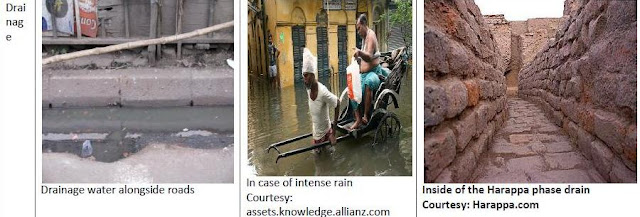India - the second most populous country in the world fairs poorly when ranked as per the Human Development Index (HDI). A major contribution for this poor ranking depends chiefly on the health sector which plays a crucial role in determining the HDI. The onus, in some way, falls on the non-availability of health facility to majority of the Indians. India has one of the highest Infant Mortality Rates (IMR) and Maternal Mortality Rates (MMR) in the world. The area of concern still remains that the country which fare poorly in terms of economic growth with respect to India like Bangladesh has a better strategy to combat IMR and MMR as compared to India !!
In order to resolve the burning problem, the Ministry of Health and Family Welfare started off the National Rural Health Mission (NRHM) in 2005. This ambitious mission was aimed to improve the health care delivery system across rural India. Certain benefits were announced under the Janani Suraksha Yojana (JSY) where the poor pregnant woman would get cash for institutional delivery and also for neo-natal care. Accredited Social Health Activists (ASHA) workers are appointed in the villages who undergo regular training and act as a bridge between the poor women and the government. They are supposed to take additional care of the adolescent girls and provide them with iron tablets. Also the Auxiliary Nurse Midwife (ANM) is present to ensure optimum level of health in the villages.
After the birth of the child, it is supposed to be given proper care under the Anganwadi Scheme launched under the Integrated Child Development Services (ICDS) upto the age of 6 years. Proper food is also supposed to be given and annual check-up of the infants are to be done by pediatricians.
However even with all such advantages, the benefits often do not trickle to the people for whom it is intended.
Real life example from a village visit
As a part of a training module, we had to go to different villages of the country to sensitize ourselves to the problems faced by rural India. The village were I was sent was Jirona, in the Umri Taluka of Nanded district of the state
Maharashtra. Although Nanded is a prosperous town owing to the holy connection that it has with the Sikhs, the village which is approximately 270 km away from the main town neither did nor present a very cheerful view.
Doctors, the villagers pointed out were alien to them. The ANM worker who had the responsibility to look after that village and the adjacent village of Somthana, located 2 km away, would come once in a blue moon. The ASHA worker was present in the village though; but people could hardly rely on her.
They felt that going to the Taluka and getting treated by the doctor over there is far better than getting treated by her, even if that means they have to visit the doctor in his private clinic. So much so, she did not know how to see a thermometer, even though she gets training for that as well.
There exists a high correlation between good sanitation and good health. As the first Prime Minister of independent India Jawaharlal Nehru said:
“The day when all the houses in India will have a bathroom, I’ll know that India has really progressed.”
Well, even after six decades of freedom, sanitation still remains a far cry for greater part of India and the awareness regarding hygiene and sanitation is still very low.
In the adjacent taluka of Bhokar in the same district, open defecation was found rampant in majority of the villages.
This writing took its concrete shape after the news was published that UPA Chairperson Mrs Sonia Gandhi launched Rashtriya Bal Swastha Karyakram on 6th February, 2013 at Palghar town in Thane district of Maharashtra. Thane is approximately 548 km away from Nanded.
The main idea of this Karyakram is to provide safety and security to the children upto 18 years of age. However, the question remains if the basic amenities that were being provided are still unavailable to a major portion of the people, considering the district of Nanded as a representative sample unit, then how the new scheme can be implemented effectively?
Thus, just flagging off new programmes is not an answer to the growing issues of the burning problems like high MMR and IMR. Effectively spreading the programmes and implementing them remains a challenge - solving which will help in the holistic growth of India. Also the urban slums need to be taken care of, as more and more people who are migrating to the city are forced to live in the slums in very unhygienic conditions. Then only we can boast of a shining and growing India.
-----------------------------
P.S. The author desires to remain anonymous. However, you may post your comment(s) freely at this forum !






